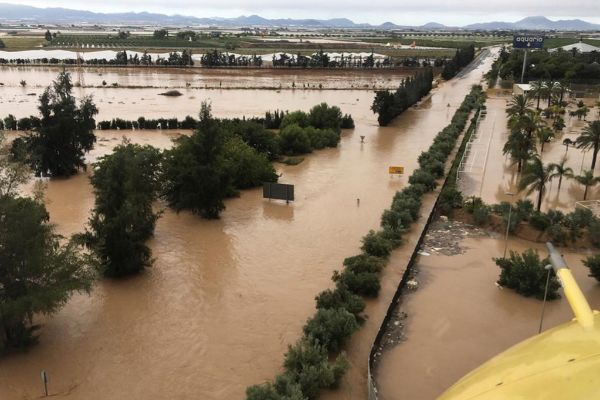The devastating consequences of the cold drop that plagues the southeast of Spain these days, particularly Murcia and the Valencian Community, have resulted in several fatalities as well as substantial material damage. The images of the floods have impacted public opinion due to the intensity of the rains, the caliber of the floods and overflows of rivers such as Segura. Waterlogged municipalities, thousands of evacuated neighbors, collapsed cities, cut roads, suspended rail lines and closed airports. We are not, therefore, before floods of the usual proportions in regions prone to torrential rains, but before a cluster of natural events of extreme virulence. This requires the effective response of public administrations. Both in relief tasks and in addressing an in-depth assessment of the causes of this atmospheric phenomenon, in order to prevent its future effects from being so bleak.
In episodes like the ones that Levante lives, the first thing is to emphasize a general message of caution. It goes without saying that caution in these cases advises to restrict displacements as much as possible and take appropriate preventive measures . The second is to urge all public administrations to strengthen the security, emergency and civil protection devices, whose troops are doing extraordinary work in the affected areas. The Government offered help to the autonomous communities. And Sanchez, although he suspended the conclave he had today with the barons, said yesterday that he will not travel to Levante until it is "technically possible". For their part, PP and Cs requested the declaration of "an area seriously affected by an emergency", an extreme that the Executive should consider.
At a height of 5,000 meters, a mass of cold air, in contrast to the warm Mediterranean temperatures, the Isolated Depression in High Levels (DANA) generated storms and heavy rains that during the last days have kept the southeast and southern coast on red alert our country. According to data from the State Meteorological Agency, rainfall of more than 200 liters per square meter was recorded in just 24 hours in the affected areas. The cold drop left more than 400 liters per square meter in 48 hours in the province of Alicante, while in two hours almost half of the rainfall that usually discharges throughout the year in San Javier (Murcia) fell. Both cases give the measure of rainfall intensity.
A DANA is a common phenomenon, but this year it breaks rainfall records. And the scientific warning about the magnitude of its consequences should move public authorities to articulate the appropriate measures to deal with this phenomenon . It would be hasty to relate the ravages of the last hours with climate change, although it is true that a good part of the scientific community links global warming with the proliferation of prolonged periods of drought and short and intense episodes of rainfall. We must flee from alarmism and catastrophism without incurring denialist positions. The scope of the environmental emergency requires improving planning, reviewing the design of infrastructure and mobilizing the necessary resources for the cleaning of riverbeds and banks . Although the zero risk is a chimera, all these actions would significantly reduce the damage caused by a cold drop that will return.
According to the criteria of The Trust Project
Know more- Murcia
- PP
- Valencian Community
- Citizens
- Alicante
- Drought
- Editorial
Analysis Pedro Sánchez annoys everyone with the transfer of the Tagus
The Spain of the pacts creates more public offices
EDITORIAL An alternative project to Pedro Sánchez

